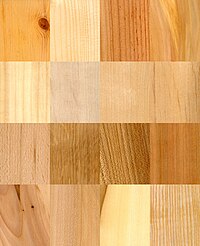
Photo from wikipedia
Extracts of different medicinal plants had been used to control several diseases in both traditional medicine and modern drugs. In the current study, we aimed to examine the changes in… Click to show full abstract
Extracts of different medicinal plants had been used to control several diseases in both traditional medicine and modern drugs. In the current study, we aimed to examine the changes in chemical composition of Zilla spinosa Forssk. plants collected from different habitats in Saudi Arabia in response to spatial and seasonal variations. Z. spinosa samples were collected from two different sites in Riyadh and Eastern regions in Saudi Arabia to examine the spatial variations effects on the studied parameters. Samples were collected from both sites at two different times (3:00 PM and 3:00 AM) to examine the effect of light on the chemical content and composition of these plants. Samples was, also, collected from the same sites at two different seasons (on start of January 2018 “winter season” and end of May 2018 “summer season”) to examine the effect of temperature changes (seasonal variations) on the chemical content and composition of the different studied plants. In Z. spinosa plants collected from Riyadh region, squalene was found to be the major constitute of 3 samples; however, surprisingly, the sample collected in Winter at 3:00 AM showed the presence of mome inositol and (Z)-5-(formylmethylene)-4-methoxy-2(5 h)-furanone as the dominant components. Similarly, chemical compositions of essential oils extracted from Z. spinosa samples collected from Eastern region in the Summer season was dominated by squalene. Z. spinosa plants showed that all collected samples had high carbohydrate and protein contents with very low content of fats.
Journal Title: Saudi Journal of Biological Sciences
Year Published: 2020
Link to full text (if available)
Share on Social Media: Sign Up to like & get
recommendations!